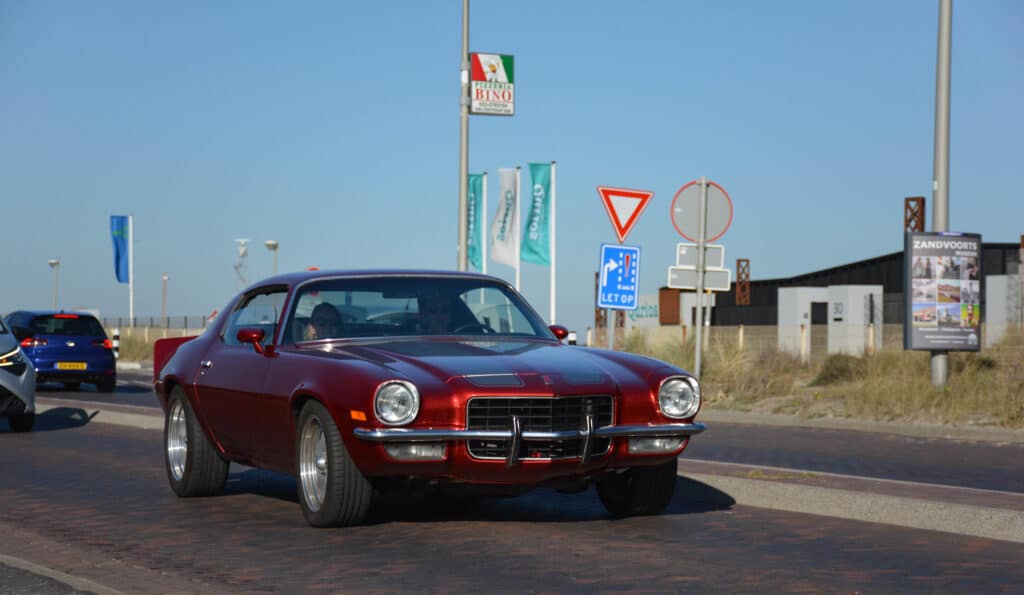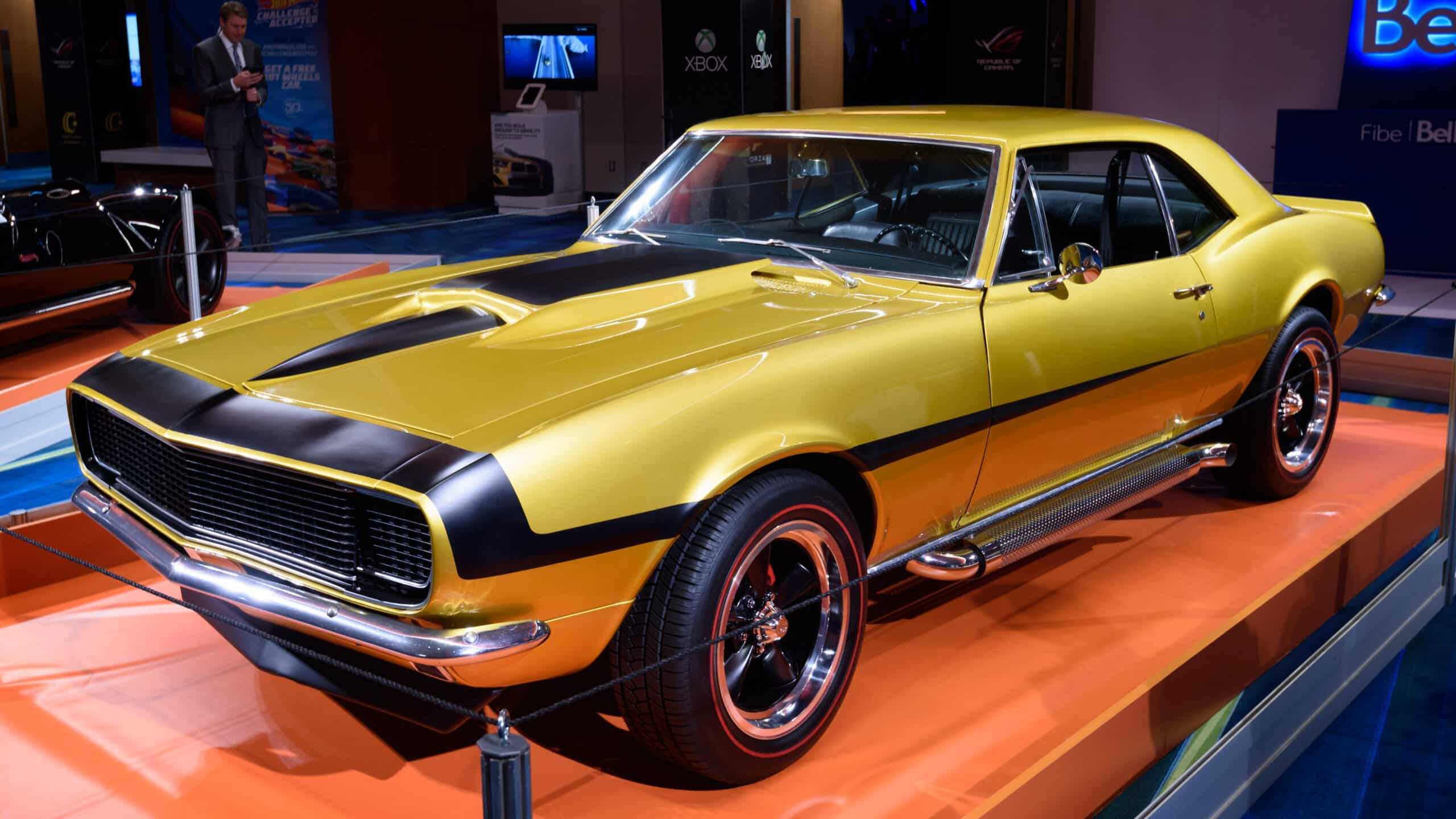When speaking about muscle cars, it is impossible not to mention the legendary Chevrolet Camaro. Besides being one of the first models in this segment, this car is also one of the rare ones that stood the test of time. Today, Camaro is widely regarded as an integral part of the American Muscle trio, alongside Ford Mustang and Dodge Challenger. But it wasn’t always like that, as this car had its ups and downs during a five-decade-long production run. In this article, we will go through all Camaro’s generations.
The story behind the Chevy Camaro
Back in the early 60s, GM and Chevrolet had an undisputed dominance over the domestic US market. They had a best-seller in almost every automotive segment, ranging from sports coupes and family sedans to utilitarian pickup trucks. Other brands and manufacturers seemed to have no answer to this tide of models and could only hope to be the second-best. And then, out of nowhere, Ford came up with the Mustang. This new car was different from anything else, as it offered a fun driving experience at an affordable price. And it couldn’t have come at a better time, as it was a perfect fit for the new kind of buyers, the Boomers. These young people wanted a car that was more than just a way of transport and had pockets deep enough to afford it.
The new Ford was an instant hit and sold like crazy, which was a problem for Chevrolet. Firstly, they had nothing to compete with the Mustang, as this automotive outcome hadn’t even existed until this Pony arrived. But, more importantly, there was an issue of brand loyalty. Executives at GM knew well about the importance of the first impression, as many buyers would choose the cars from one manufacturer for all of their lives. And, with so many young people now buying Ford as their first vehicle, things were not looking great for Chevy. So, to solve this rising issue, their designers quickly started working on a car that could take on the Mustang. And less than two years later, in 1967, the first Chevrolet Camaro was revealed to the world.
First-generation Camaro
The first Camaro was designed and built in a tight time frame and with the sole purpose of competing against the Ford Mustang. So, it’s no surprise these two cars share many similarities, at least on paper. Both were 2-door with enough space for four adults, available either as a coupe or convertible. Engine choices were similar, with Camaro offering a pair of six-cylinder units and a wide range of V8 options. Several manual or automatic transmissions, ranging from two to four-speed models, were available depending on the model.
Where Chevy Camaro significantly differed from its Ford counterpart was the exterior design. With its smooth body lines and silhouette, Camaro was far more elegant than a boxy Mustang. Other notable details include a recessed grille and hidden headlights on some models.
The second-generation
Despite being a rush job, the first Camaro quickly became a popular and worthy competitor in the new muscle-car segment. But it also showed the direction in which its successor should go. With that in mind, the second-generation Camaro, which was introduced in 1970, had a unique design. The most prominent feature was its whole front fascia, which became Camaros’ signature mark. Shaped like a fish, with the engine grille protruding forwards, this gave this car its turn-head road presence. Such a provocative design might have been a gamble, but it paid off, as it helped solidify Camaros’ reputation.

Underneath, the new Camaro was pretty much the same car as the original one. Most of the components, including engines and suspension, were, with minor changes, similar for both generations. In the end, the second-generation Camaro stayed in production until 1981, when its successor arrived.
Third-generation Camaro
Early 1982 saw the introduction of the long-awaited third-generation Camaro, which brought in many changes. Firstly, it had a more conventional, blend-with-the-rest kind of design. With its sharp lines and flat surfaces, the new car was in tune with the early 80s. And despite still having recognizable looks, it didn’t differ that much from many similar cars of that era. Luckily, the new design went well with then-young buyers, who liked the wedge-shaped body.

The most significant changes, however, have happened under the skin. For a start, carburetors on all engines were replaced with modern fuel-injection systems, which improved fuel economy and driveability. Furthermore, a smaller, 4-cylinder engine was added to the lineup to widen the potential customer base. Transmission choices now, finally, offered 5-speed manuals and 4-speed automatic options. And lastly, the suspension was updated, with leaf springs in the back giving way to a more sporty coil-spring arrangement.
Chevy Camaro in its fourth iteration
With the 3rd gen Camaro being a huge success, it was only natural for the upcoming successor to reuse the same recipe. As a result, the arrival of the fourth-generation Camaro in 1993 was, in a way, a smooth evolutionary step with no drastic changes. This is most evident in its design, with the new car looking like a sleek, sanded-down version of the outgoing model.
When speaking of engine choices, the 4th gen Camaro fully embraced that famous There is no replacement for cubic displacement motto. The 4-cylinder engine was dropped from the lineup, leaving only V6 and V8 units as an option. Furthermore, some models were even available with a legendary LS engine, lifted together with a 6-speed manual straight from the Corvette. To keep all the extra power in check, Chevrolet also upgraded the suspension and the brakes.
The fall of the muscle car
During its initial, four-generation long production run, Chevrolet Camaro brought numerous variants to the market and gained significant popularity. But by the late 90s, this was an outdated car, despite Chevrolet’s best effort to keep it fresh and desirable. Sure, the then-current Camaro looked attractive and modern enough. But, there was no way of getting around the fact it had an F-body platform, similar to the one its 1st generation cars used.
As a result, sales figures dropped rapidly by the tun of the millennium. So, instead of thoroughly revamping it, Chevrolet decided to kill off this legendary model. Their idea was to replace the aging car with several more modern and equally powerful models from their lineup. This plan, however, quickly backfired, mainly because these were all front-wheel-drive cars. While traditional muscle-car buyers steered away from these alternatives, others didn’t see their purpose. Having realized this, Chevrolet started toying with the idea of returning the Camaro into production. However, any substantial work on this project had been postponed several times.
Fifth-gen Camaro – the car that rose from the ashes
Fifth-gen Camaro was introduced in late 2009, just after GM’s bankruptcy, and had played a significant role in Chevrolets’ revival. Being strongly influenced by the original Camaro, the exterior design traced its roots to the beginnings of the muscle-car era. Still, the new car was more than a modernized copy of the 60s 2-seater. Instead, it was freshly designed from the ground up, with many successfully adapted details that paid homage to the first-gen Camaro.

More key updates were hiding under the skin, where muscle car underpinnings have taken a modern spin. All engines, starting from a frugal V6 to even the biggest V8, used the latest technical solutions. Transmission choices now only offered 6-speed automatics or manual, which improved fuel economy and driveability. But the most significant upgrade was the introduction of the independent rear axle. This small detail gave the new Camaro an upper hand over the Mustang, which still had a live rear axle.
The long-awaited car was an instant hit from day one. In fact, the demand in the US market was so high that Chevrolet had to postpone its plans to export it overseas. It was clear the bow-tie muscle car was back in style, and it was here to stay.
Current Camaro
With the outgoing Camaro making a firm foothold on the market, it was only natural for the current car to follow its steps. Its exterior design is even more focused on a dominant road presence. This is achieved with wide headlights and a prominent grille, among other things.

Under the hood, there is a selection of engines, starting with turbocharged 4-cylinder units. There is also a V6 and a pair of V8 engines, with one of them having a supercharger. A wide range of transmissions includes anything from 6-speed manuals to elaborate 10-speed automatics. With all that, the current Camaro is a very competitive car in its segment.
Chevrolet Camaro – in short
Camaro is a sports 2-door car, produced by Chevrolet since the late 60s. At first, it was built to compete with the surprisingly successful Ford Mustang. And with time, it became one of the most significant muscle cars on the market. But by the turn of the millennium, it seemed the muscle-car era was over, and Chevrolet pulled the plug on Camaro. This, however, turned out to be a mistake and was eventually put back into production. Today, Chevrolet Camaro is one of the few remaining legitimate muscle cars, together with Dodge Challenger and Ford Mustang.





